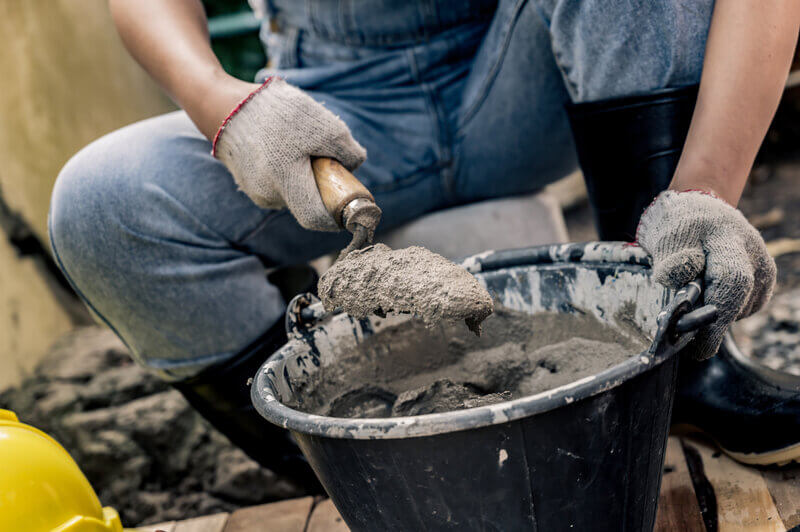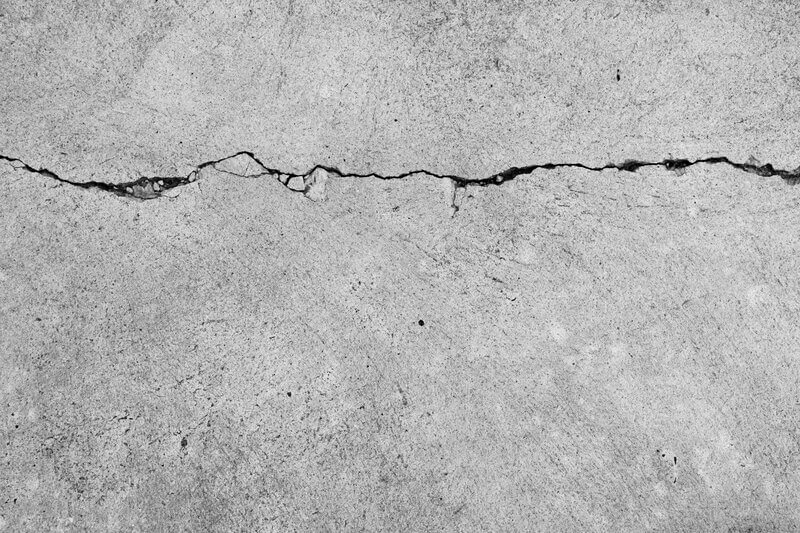
Cracks in concrete not only make your driveway, patio, or steps look undervalued, they can also lead to further problems as moisture seeps into the concrete. Prevention and maintenance is always your best protection against further costly and unnecessary problems. If you’re looking at fixing your damaged concrete yourself, using our DIY concrete repair will help you get the job done the easy way.
Whether you’re fixing a crack in your driveway, a concrete floor or a pothole, we can guide you in the right direction so you can fix it yourself with confidence.
The different causes of damaged concrete
Before you repair anything, it’s best to know what caused the problem in the first place so you not only have a better understanding but have a better chance of success with a DIY concrete repair that lasts longer.
Corrosion
Concrete corrosion is the chemical, colloidal deterioration or disintegration of solid concrete components and structures due to attack by reactive liquids and gases.
Corrosion is one of the biggest causes of concrete deterioration, so reinforced concrete must be installed and maintained correctly to minimize the risk of damage.
Temperature variations in concrete
Changes in the temperature of concrete can cause cracking. As the concrete gets hotter, it expands; as concrete gets cooler, it contracts. This is similar to many other materials you have probably learned about.
Plastic shrinkage
When the concrete is still in its plastic state before the hardening phase, it is full of water. This water takes up space and makes the slab a certain size. As the slab loses moisture while curing it gets a bit smaller.
Freeze-thaw cycle
If your concrete floor is located outdoors, it’s exposed to many elements. That means rain, wind, and the endless freeze-thaw cycle, to name just a few natural forces. Like corrosion, moisture is another primary culprit of concrete damage. When excess moisture in your concrete freezes, it expands, putting pressure on cavities within the material.
The concrete dries too quickly on application
If the concrete dries too quickly, it will lose moisture which can cause fine cracks throughout the concrete.
Improper installation
Improperly constructed joints, excessive moisture during curing or in the mix, and premature sealing are just a few potential examples of an installation gone wrong. Signs the job was rushed is finding crazing, spalling, and blisters.
How to tell your concrete needs repairing
Cracks appearing in the concrete
The most obvious sign that your concrete may need repair work is the appearance of cracks. Cracks in concrete can be caused by the soil underneath expanding and contracting due to weather conditions. If you have noticed cracks in your concrete, repair them promptly or seek professional advice.
Signs of concrete ageing
Like everything, expect concrete to age over time. A combination of cracks, pooling water, potholes, and unevenness are all signs of damage caused by ageing. The concrete will have noticeable signs of ageing and will look worn out.
An uneven appearance
Another sign that concrete repair is necessary – if your concrete floors, external areas, or walls seem uneven. If you fail to take action when you notice your concrete areas are no longer even, you could end up with a serious issue. This includes crumbling and breaking, which causes instability and could also lead to injury.
Potholes
Like cracks, potholes are caused when the ground underneath it expands and contracts, as well as by the constant pressure from your vehicles. A pothole is more hazardous than a crack, as the hole can cause serious damage to not only cars but to people who use the driveway.
Repair your concrete with our DIY concrete repair
Our DIY concrete repair solutions include one of our most popular products MG-KRETE.
MG-KRETE is a simple and cost-effective solution that’s ideal for your DIY concrete repair and ideal for a wide range of repairs, including:
- Roadways
- Potholes
- Footpaths
- Driveways
- Industrial Floors
- Parking Decks
- Bridges
- Re-sloping Issues
- Trip Hazards
- Access Ramps
- Steps and Stairs
MG-KRETE lasts much longer and withstands wear and heavy traffic and is superior to traditional cement-based patch material.
Not only does it repair damaged concrete, but it restores structural integrity, whether in thin overlays or pouring into forms, and it can be troweled vertically or overhead.
It has a tenacious bond and does not shrink, creating a surface that is more impervious to moisture, salt, gas and oils, and requires no long-term maintenance.
MG-KRETE is your perfect solution for all domestic, commercial, and industrial concrete repairs.
We have a comprehensive guide, including technical data and safety information, plus a step-by-step video on how to mix and apply it so you can feel confident about fixing it yourself.
Let us help you with your DIY concrete repair
If you need help deciding on what solution is best for your DIY concrete repair we are here to help you make the best choice so you can get the job done right the first time.
We also provide many other custom solutions, including pothole repair and waterproofing concrete.
For more professional advice or questions, you can contact us, and one of our friendly and experienced team members will be happy to help you with your DIY project.
Repair your concrete with confidence and call us today.

Cohe are suppliers of innovative construction products that allow for a quick, efficient, environmentally friendly and cost effective repair, for both DIY and commercial applications. Stay tuned for tips and news from our world.



